For a few years now, we have been using bio-active soils in lizard and snake cages.
The idea behind bio-active substrates is that you will have an entire eco system in your reptiles’ cage. The benefits from this are awesome. The natural good bacteria, microbes, isopods, substrate mites, and other insects that live in the soil, virtually act as a sanitation crew. Fecal matter can be completely broken down in less than a day. Even uneaten food items get broken down. Some of our cages have had the same substrate for close to 5 years without ever being changed or even spot cleaned. There are no foul oders or even any trace of fecal matter. It works so well that we may turn up a mouse or rat skeleton every once in a while (in the snake cages). The uneaten food items get broken down so fast that they never really have a chance to stink so they go un-noticed…
[ad#sponsor]
Creating a bio-active substrate is quite easy. It may involve things you are not used to hearing like, DO NOT BAKE, CLEAN, DISINFECT, OR WASH ANYTHING. Your friends in natural dirt will take care of all that for you.
My first step is to go to a garden shop and get some organic topsoil… I then head to the beach to get some sand. You can also use play sand that can be bought in home and garden shops. The I go to the woods to collect leaf compost, branches, logs, dirt and rotten wood/logs. I prefer to take ones filled with isopods, millipedes, centipedes, and wood lice/substrate mites. Then I go to my yard and scoop up some fallen oak leaves…
So at the bottom of the cage we mix some of the sand, dirt, topsoil, and leaf compost together. On top of that we add the rotten wood with all who inhabit it… Then we put more of the dirt mix on top of that and we then add the leaves. Your substrate ratios will depend on the species you are keeping. For instance, for most of our varanids and leopard geckos we use a 50% sand, 25% compost, and 25% dirt/topsoil mix.
We also add dubia roaches to the cages as well as super worm beetles and larva.
There is never any mold growth or build up of harmful parasites, bacteria, or other protozoa. We have actually had samples tested at the University for free and the soil in the cage is naturally clean.
This system has been tested and works equally well in rack systems. We find that changing the substrate in rack systems every 6 months or so works well. We do not remove all of the substrate in rack systems when we change it out. We only remove about 75% of it so we do not have to start the culture from scratch.
This system may not be for everyone but those who have used it see the huge benefits in it. We have seen huge differences in behavior. Animals being kept on the bio active substrates seem to behave more naturally. They are more active and are always on the hunt for food. Our leopard geckos housed on the bioactive substrate will dig burrows and forage for super worms, meal worms, and roaches constantly. One of our female leopard geckos laid a pair of eggs out of the nest box that went unnoticed by us and we found a pair of hatchlings running around the cage one day. It took us a minute to figure out how the two hatchlings got in the cage.
Some people will say that there is a huge risk of impaction when using particulate substrates. The fact is NATURAL particulate substrates will only be an issue if your husbandry is inadequate. When reptiles are properly heated, hydrated, and supplemented, there is little to no risk of impaction and the benefits from using bio active substrates far outweigh the minimal risks.
[ad#250]


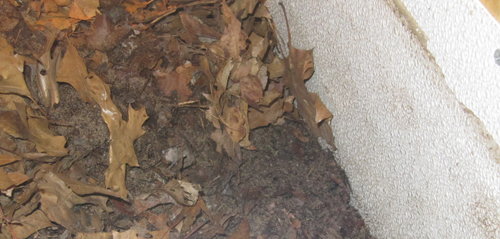
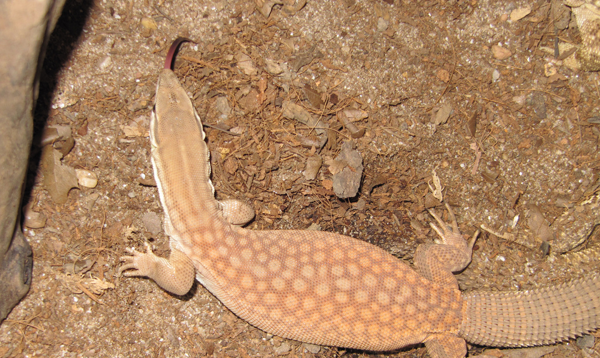
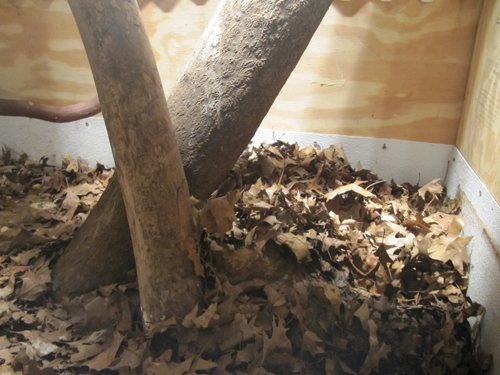
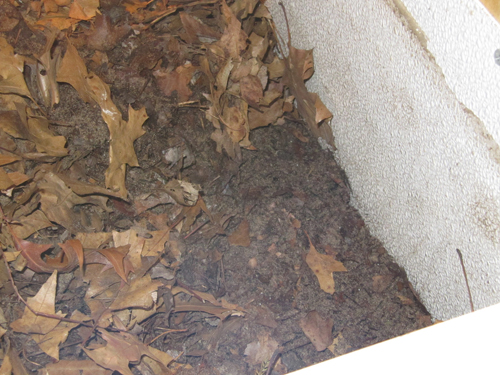

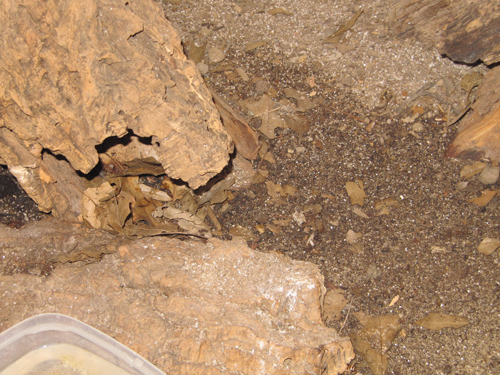
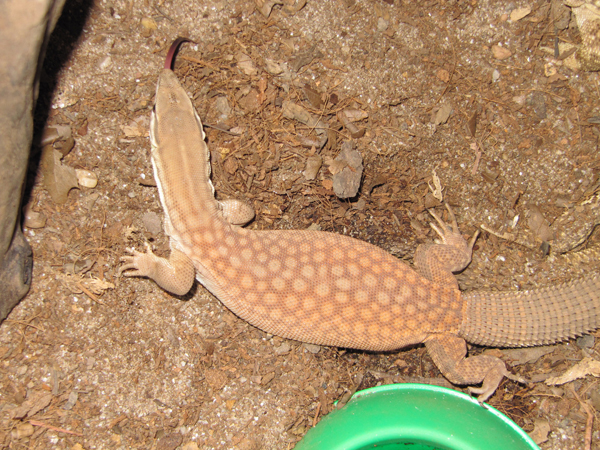
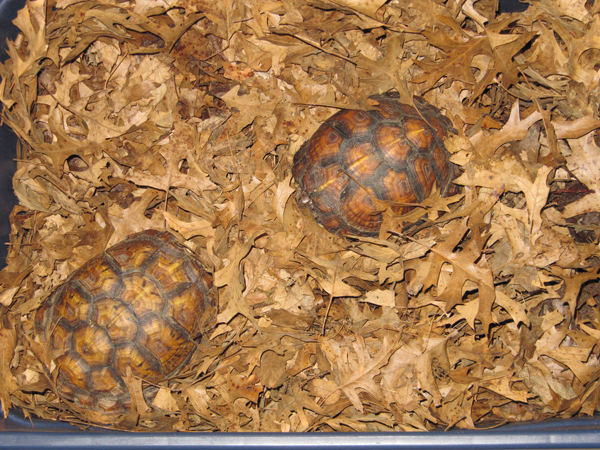
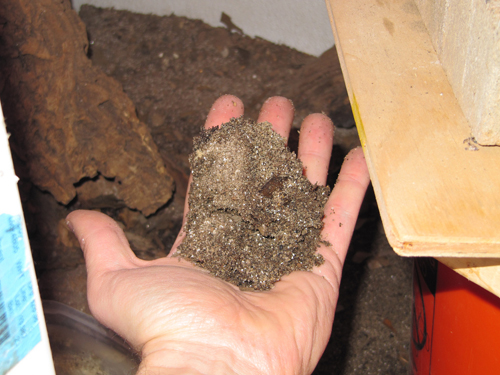
How good would this be for a dragon
I read your article on Bio-active substrate with great interest, Greg. It works the same way as placing certain fish in a fish tank to keep the tank clean. Here the insects do the work, and so much healthier for your pet.
Thanks, Greg! Awesome article. It has inspired me to give it a try. Check out the Crested gecko cage I did: http://www.facebook.com/photo.php?fbid=10150094479837860&set=a.10150094479827860.286530.187373332859&theater
The substrate works for pretty much any species including bearded dragons…
Eila,
Thanks for the comment…
Matt,
The crested cage looks great… How did you set up the substrate?
Very interesting article Greg. I have been doing somthing similar in a few of my enclosures for about a year and it has been working out great so far and plants help too if you have an animal with moister environment requirement 😉
Great article. I’ve used these same methods for monitors, colubrids and inverts I keep/ have kept.
I think there should be more info on the negatives though. Whether novice or experienced, reading this for the first time it sounds great but is not so cut and dry?
More on impaction should be mentioned because with this setup it is extremely easy to happen. Good husbandry is the key but husbandry is very different in these practices. Heating is a bit different, water/humidity is bit different to make sure you have it right to avoid one organism overtaking another. I would love to see an in depth article from this person with more detail. I’d also worry about bad mites/parasites, There are ways to avoid this and some good organisms counteract bad organisms. I guess what I’m trying to say is a warning is needed at the end of some articles like this saying that it is a summary and that more research is needed to accomplish these practices correctly. Some people are simple and dont look ahead so they will do everything mentioned in the article without looking more into it. Kind of like warnings on HOT COFFEE THAT YOUR COFFEE IS HOT AND WILL CAUSE BURNS!! LOL
I must add, because again some people are fickle, whether it be the original author or someone reading this, I mean no disrespect. I’m hoping to see more detail. Maybe we can get another article with specifics and we can post on our forums for members to enjoy>>>>>>
Hey loved the article its something ive thought about but never really looked into the +/-s and how people go about it.
Just a couple questions:
I was curious about the bad parasites and the ones to counter act them?
Its winter here(will be for a few more months) any suggestions on getting something going? or best to just wait until spring?
Thanks!
Sean, No disrepect or ffence taken…
I do need to point out some things here though…
Impaction is never a worry of mine… I have never had a single animal become impacted… Impaction is caused by bad husbandry, not substrate… If you do not have basic care and husbandry down, you should not be keeping reptiles at all in my opinion…
Secondly, there are no reptile mites native to the US… Snake mites originated from African imports… I have never collected one parasitic mite or tick and all the years I have been setting up cages like this… This is also something I do not worry about…
Each species of insect has its own niche in the substrate… The substrate offers a humidity gradient much like heating elements provide temperature gradients…
I do not have that paranoid outlook and refuse to keep my animals is clinical, sterile conditions because I have seen nothing but great things since I have been using this method…
How do you heat your enclosures – UTH or overhead bulbs?
Thank you.
Mr. Madden,
I’m glad to have found this article, it was not only informative, but extremely inspiring. I had been tossing ideas around for a bio-active substrate of my own, but this is a complete recipe. There are, however, a few questions or concerns I have about it that I’d like you to address if you have a minute.
Sean mentioned the risks of impaction and you seem to have a high trust in the fact that your animals will not be at risk if properly cared for. I own two Sudan plated lizards and they eat mouthfuls of substrate (I use Exo Terra’s Plantation Soil in their tank) as they catch crickets. My black-throated monitor also often gets his prey full of substrate as he eat because he repeatedly drops then picks up his food from the ground. These two examples only serve to prove that my animals are, in fact, at risk of swallowing whatever substrate I use. Why is it that the bio-active substrate is harmless to them? Doesn’t sand and dirt risk cluttering or cutting within their throat or digestive tract? I’m sort of worried about the outcome of such a thing, so far, the only problem that resulted of swallowing plantation soil is constipation (which a bath has solved), I really enjoy the idea of an everlasting substrate, but I’m uncertain of the health risks, if you could shine some light on this, I’d appreciate.
My second concern was also one pointed out by Sean: mites. You mention that there is no risk of mites because we do not carry them in North America, I’m from Canada, and my green iguana got some sort of parasite (small reddish spider-like creatures that cling between the scales), they didn’t seem to put my animal’s life at risk, but it was very clear that these critters were drinking its blood much like mites and causing it stress and discomfort. My guess was that these came from a large piece of wood I found outside and was using, do you think this could be the case?
Thanks for looking into it, I’ve noticed you answer questions asked after your article, I appreciate that, it’s quite helpful.
How could I make this work safey for a hognose snake? Thanks!
hey i was wondering if i could house a leopard gecko colony in half this substrate and then half tile or even 3/4ths substrate. it kinda goes agaisnt everythign iv read about leos so far but the natural self cleaning and ability for them to lay eggs in it is what im going for im trying to make a huge natural tank for them right now
How can I keep my leo pard gecko on this? Won’t it be to humid?
I use coco fiber mixed with a small amount of desert sand and leaf litter. I mist monthly or less and there doesn’t seem to be any problem with humidity.
Centipedes and millipedes? Won’t they start breeding in there and then infest your house? Centipedes bite, too!
I have a tegu setup like this. Not changed the substrate in months. No waste in sight or smell. The entire tank is on a mesh covered grid with a flowing water table underneath. Spray the cage down once a month and any remaining waste gets dissolved in the water that comes out the bottom drain.
can u have a live cactuse in a leapard gecko tank?
As long as you can meet the following conditions: enough light for the cactus, no spines on the cactus that would hurt the gecko, ability to water it without raising the humidity too much. Your best bet is to have the cactus in a small pot and to remove it every so often and drench it before returning it to the cage.
Does this work for snakes? Do you have to worry about the bugs getting overpopulated with a snake cage because obviously, most snakes don’t eat bugs.
I’m not a snake keeper, so I can’t give a definitive answer but my geckos don’t eat the bugs and the population seems to control itself with no problem.
Would you please add a pic of your Leo enclosure?
I am wanting to get mine started immediately but am unsure as how to get the proper belly heat for digestion. Is the substrate only on one side?
Can I make the ‘burrow hides’ go down into the substrate until they are on the glass/tile? (I’m thinking of something that looks like a Hobbit house; enter at ground level, crawl down to digest, soil covers the top of the hide.
Did I explain myself well?
Thank you so much for this information, I very much agree with keeping them in a live environment instead of sterile conditions!
I was just wondering if you use any sort of pebbles eon the bottom to drain water, or if you use just the substrate?